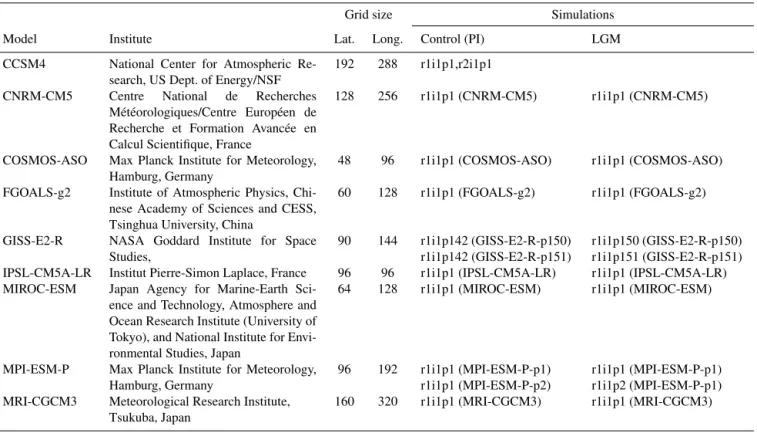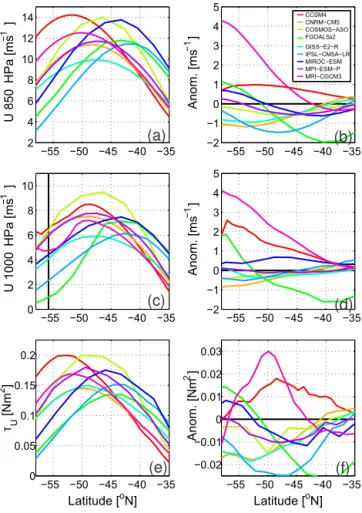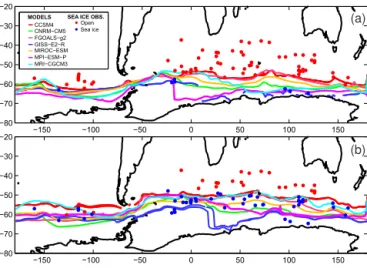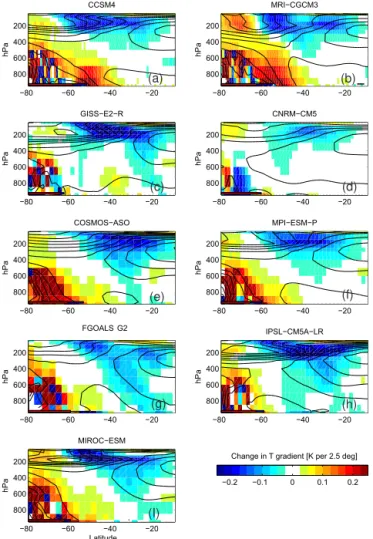Sea ice led to poleward-shifted winds at the Last Glacial Maximum: the influence of state dependency on CMIP5 and PMIP3 models
Texto
Imagem




Documentos relacionados
Our results suggest that oceanic paleoproductivity and the supply of terrigenous sediments to the Brazilian continental margin were higher during the Last Glacial
such as changes in nutrient supply from land (which remain constant in our scenarios) or shifts in phytoplankton species composition/stoichiometry that impact the export of
Using four different climate models, we investi- gate sea level pressure variability in the extratropical North Atlantic in the preindustrial climate (1750 AD) and at the Last
Therefore, in order to understand changes in the position and strength of ARC during the last glacial–interglacial cycle, here we reconstruct hydrographic changes in the
and Marsiat, I.: Simulations of the Northern Hemisphere through the last glacial- interglacial cycle with a vertically integrated and a three-dimensional thermomechanical ice-
Further, the PMIP2 and PMIP3 models all simulate a smaller and thinner Arctic summer sea-ice cover in the mid-Holocene than in the pre-industrial control climate.. The PMIP3 models
Our model results indicate that sea-level changes during glacial-interglacial cycles affect the displacement and stress field in the forearc, along the plate interface, and in the
The latitudinal shifts in the subtropical high-pressure belt appear to be related to changes in the width of the Hadley circulation, which could be linked to the changes in


